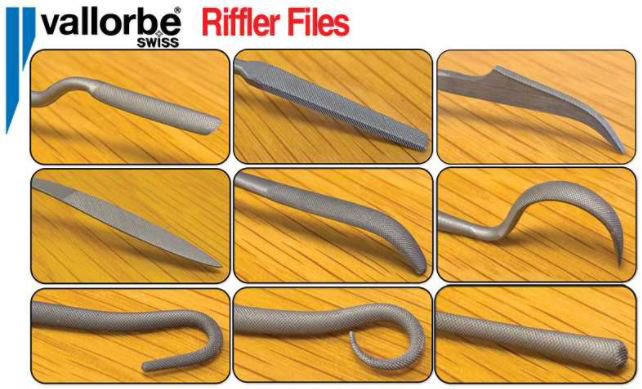You can spend your entire working life behind the watchmaker’s bench - and even call yourself a watchmaker - without the need to ever use a metal file. Indeed, most watchmakers don't make watches but repairthem by pulling them apart, solving problems, replacing worn out or broken parts and then putting them back together. It’s only once you start making individual components by hand that you realise that your most essential tool is no longer a screwdriver or tweezers but files, drills and polishing stones, which is now clearly obvious to me.
What is less obvious is the following: What type of file is a true watchmaker’s file? One which will allow you to craft a precision component, a file made to last for many years, even when used daily?
If there is one thing intrinsically more Swiss than Milka chocolate it has to be the custom of naming a product by the name of the village it was manufactured in. Then - a few decades later thanks to the product's quality and longevity - that geographical place becomes a synonym for the product itself…or even an entire industry.
Here are a few examples: To most watchmakers, Marvin, Cortebert, Tavannes, Orvin, Peseux and Fleurier are watch brand names but, for everyone else, they are just names of some tiny picturesque Swiss villages. Just like when you say: "I left my Montblanc on the desk", you are obviously referring to your pen, not the Mont Blanc; the highest mountain in Switzerland and Europe.
To me, Vallorbe always means just one thing: a watchmaker’s file. Well, as you've guessed, I was wrong…partially, at least. Vallorbe is not a village but a tiny municipality near the Swiss-French border where, since the late 1890s, the Vallorbe file factory is located. In their vast range of precision files for various industries, watchmakers’ files are branded under the name Glardon.
So which glardon would be best suited for a job?
The answer would depend on a number of factors, all to be carefully taken into consideration. Firstly, which metal you are working on: steel, brass, titanium or some other exotic alloy? Next, the file profile, which should correspond to the shape of the component you are making, with many dozens to choose from. Then comes the grade selection which ranges from very coarse to extra fine (000, 00, 0, 1, 2 ,etc, up to 10). There are different types of files for different stages of part production: from roughing to precision work, polishing to shaping, down to very specific operations like escape-wheel teeth work. Then there are high-speed steel and coated glardons, diamond embedded ones, carbon fibre files; down to special shaped files designed to reach unreachable spots.
Vallorbe claims to manufacture "the hardest files in the world" with a coating of 72 on the Rockwell Hardness Table. Since I am not an expert in hardness I had to look up this value only to find that 72 is the highest value on the list. I guess I shouldn't be surprised... sometimes you do get what you pay for.
While a modest set of Vallorbe watchmaker’s files could easily cost over $500 this investment is worth every cent. Yes, there is something magical about shaping the metal - and if you prefer to do it by hand in style - then do it with glardons.


0 Response to "Shaping prestige, tooth by tooth"
Post a Comment